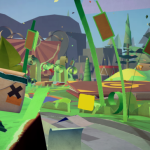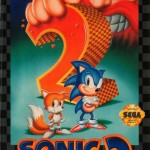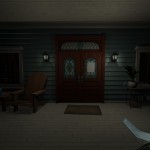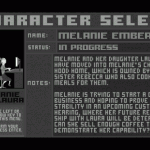When Games Matter is a weekly exploration by Drew Dixon of meaningful moments in games. Operating under the assumption that games do in fact matter, Drew seeks to highlight those moments that have much to say to say about who we are and the world we live in.
It’s quite popular these days to scoff at the idea of boss battles—some feel that they are an outdated game trope. I recently shared how Deus Ex: Human Revolution‘s boss fights shattered some of the game’s most meaingful moments. After defeating the third and final boss, I decided it wasn’t worth writing about—it was every bit as annoying as the first and second. These experiences make me wonder whether games are better off leaving boss battles behind. Are such battles examples of how games are typically mere vapid entertainment?
The problem with DX:HR‘s boss fights is that they contradict one the game’s major themes—options. Deus Ex gives the player the option to play through its levels stealthily or directly and also to take lethal or nonlethal action against enemies. These options are shattered when the player faces DX:HR‘s bosses. There is typically only one way to defeat them, and they are incredibly hard to beat unless you have been building your character into a tank-like commando. As a stealthy hacking character, the second boss in particular was one of the single most frustrating moments I have ever had with a game. Additionally, the bosses you fight are never developed as characters, and the battles against them are randomly hoisted upon the player at the end of the game’s levels.
To throw out boss fights altogether, however, would be an overreaction—I immediately recognized this when I recently played two new games that feature them.
Batman: Arkham City contains some truly fun and well designed boss fights. These fights do not contradict the design philosophy of the game or the game’s narrative. My favorite boss fight, though a bit heavy-handed, was the fight with Mr. Freeze. There are multiple ways in which to approach this fight—none of them are direct and each involves using skills and gadgets you have been developing throughout the course of the game. This fight is challenging without being punishing, and it fits comfortably in the world of Batman. The game gives you options in terms of building Batman’s skills, abilities, and gadgets—unlike DX:HR, those options are honored in its boss fights. Arkham City treats us the way we all want to be treated—it’s fair, honest, and consistent.
One of the ways boss battles can be interesting is by warning players of an impending battle. Games can thus make infuse us with a sense of dread and anticipation for what is coming. Can I overcome this enemy? Will I be ready? Id Software’s RAGE did this excellently in one of its early levels. I am traversing an abandoned city that is infested with deadly mutants. Early in the level, I hear loud stomping that sounds like an earthquake or some giant mutant monstrosity. As I progress through the level, I am confronted with larger and larger mutants, and after I defeat each of them, I am given glimpses of the giant. In other words, what I greatly fear becomes more and more of a reality until finally I am forced to fight the enormous beast. These glimpses served to make me fearful of him and consequently served to make that fight more emotionally resonant. DXHR‘s bosses, on the other hand, are frustratingly random and lacking narrative relevance. Where as DX:HR‘s boss battles break the flow of its narrative, this boss battle in RAGE drives its narrative and gives it emotional power.
Games certainly have a history of over-doing the boss battle, and I do think that many games would probably better off without them. However, it is clear to me from RAGE and Arkham City that boss battles can be entertaining, interesting, and even emotionally evocative.











